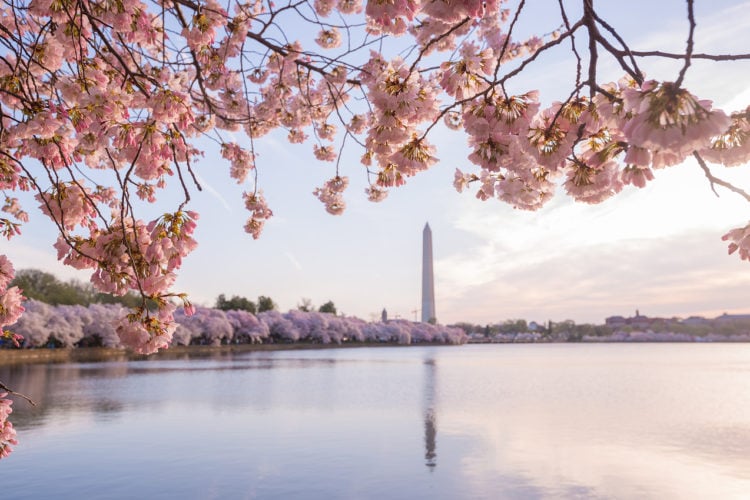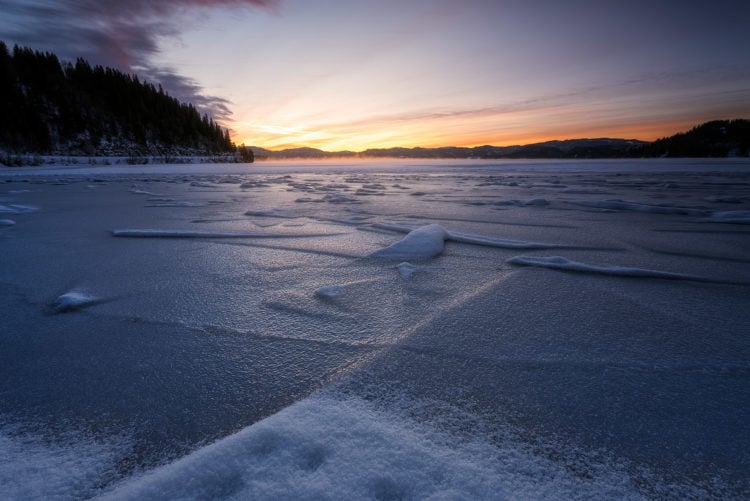The Best Aperture for Landscape Photography
![]()
The question “What aperture is best for landscape photography?” is often asked in various online forums. While there isn’t one “correct” aperture, certain scenes benefit from using a specific one. For standard landscape photography (excluding night photography, macro photography and other niches), the optimal aperture for front-to-back sharpness lies within f/7.1 to f/13.
Find the Lens’ Sweet Spot
![]()
If you’re new to photography and just learning about aperture, this might sound confusing, but the sharpest aperture depends on the lens.
Note that when writing about sharpness in this article, we’re talking about overall front-to-back sharpness not depth-of-field sharpness. The sharpest aperture is when the overall image is at its sharpest.
The sharpest aperture of your lens, known as the sweet spot, is located two to three f/stops from the widest aperture.
Therefore, the sharpest aperture on my 16-35mm f/4 is between f/8 and f/11. A faster lens, such as the 14-24mm f/2.8, has a sweet spot between f/5.6 and f/8.
Since the majority of professional lenses have a widest aperture of either f/2.8 or f/4, you’ll often hear that the best aperture is either f/8 or f/11. While they often are the sharpest, I still recommend using the 2-3 stop formula to calculate the sweet spot of your lens and then test it in the field with some comparison shots of a single composition.
Now, this article is titled “What’s the Best Aperture for Landscape Photography”, not “What’s the Sharpest Aperture for Landscape Photography”. As I’ve mentioned, there isn’t one correct aperture; the best aperture depends on the specific scene.
When to Use Open Apertures
Open apertures (low f/stop numbers) are commonly used to blur the background of an image. For example, placing a flower close to the lens and using an open aperture such as f/2.8, will result in the flower being sharp and in focus while the background is soft and blurred.

Another common example of when an open aperture is ideal is during night photography. There’s not much natural light available at night, so you may need to increase the ISO, use a slower shutter speed and use an open aperture.
Keep in mind that how blurred (or focused) an image becomes depends on where you focus in the image (foreground, middle, background), how close the foreground element is to your camera and what lens you use (wide-angle vs. zoom).
When to Use Narrow Apertures
Despite more of the image being in focus, a narrow aperture can lead to less sharp images than desired.
Narrow apertures are often used when there’s a significant distance between the foreground and background, and you wish to have as much as possible sharp and in focus.

While all the image is in focus with an aperture such as f/22, it’s not as sharp as with a wider aperture. Focus stacking is a popular technique to overcome this challenge.
Another scenario in which a narrow aperture is beneficial is when the sun is partially obscured. Using an aperture somewhere between f/16 and f/22 will result in a nice and crisp “sunstar”.
What is the Best Aperture for Landscape Photography?
As you might have picked up by now, the best aperture for landscape photography depends on the image you’re taking and the lens you’re using.
An open aperture such as f/2.8 results in less of the image being in focus but the parts that are in focus are sharper than they would have been with an aperture such as f/22.
On the other hand, a narrow aperture such as f/22 keeps the entire scene in focus but it won’t be as sharp as the sharpest parts captured with a wider aperture.
And again, the rule of thumb is: the sharpest aperture (where the biggest portion of the image is in focus but still sharp) is between two and three stops out from the maximum aperture, i.e. the most popular aperture for standard landscape photography is between f/8 and f/11.
About the author: Christian Hoiberg is a full-time landscape photographer who helps aspiring photographers develop the skills needed to capture beautiful and impactful images. The opinions expressed in this article are solely those of the author. Download Hoiberg’s free guide 30 Tips to Improve Your Landscape Photography and open the doors to your dream life. Hoiberg is also the founder of CaptureLandscapes. You can find more of his work on his website and Instagram. This article was also published here.
Image credits: Aperture illustration by Mehmetaergun and licensed under CC BY-SA 3.0